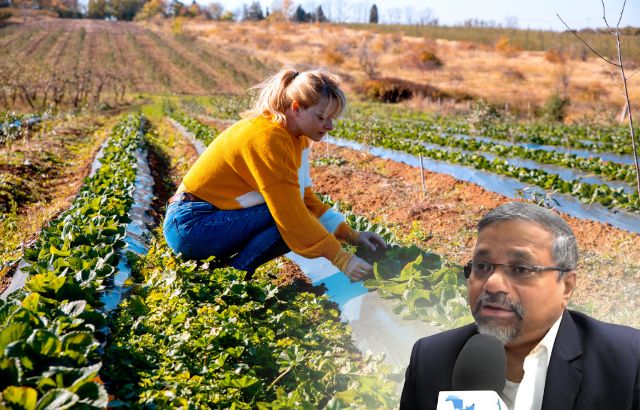Herbicide safeners play a crucial role in modern agriculture, including organic farming practices. While organic farming typically avoids synthetic herbicides, understanding the role of safeners can provide insight into sustainable farming methods and their implications for the food supply chain.
What Are Herbicide Safeners?
Herbicide safeners are chemical compounds that protect crops from the harmful effects of herbicides. They allow specific herbicides to be applied to crops without damaging them, effectively enhancing weed management while maintaining crop safety. In organic farming, where the focus is on sustainable practices and minimizing chemical inputs, the relevance of safeners lies in their potential to improve crop resilience and yield.
Significance of Herbicide Safeners in Organic Farming
- Crop Protection: Safeners enhance the selectivity of herbicides, allowing farmers to control weeds without harming their crops. This is especially important for organic farmers who rely on crop rotation and cover crops to maintain soil health.
- Yield Improvement: By effectively managing weeds, safeners can help organic farmers increase their crop yields. Healthy crops are more resilient to pests and diseases, which is crucial for maintaining productivity in organic systems.
- Reduction in Soil Disturbance: Safeners can reduce the need for mechanical weeding, which often leads to soil compaction and erosion. By minimizing tillage, organic farmers can promote healthier soil ecosystems.
- Sustainability: The use of safeners aligns with the principles of organic farming by promoting ecological balance and reducing dependency on synthetic chemicals.
Impact on the Food Supply Chain
The integration of herbicide safeners in organic farming can have significant implications for the food supply chain:
- Increased Availability of Organic Produce: With enhanced weed management, organic farmers can produce more crops, leading to a greater supply of organic food in the market. This helps meet the rising consumer demand for organic products.
- Cost-Effectiveness: Effective weed control through safeners can reduce the costs associated with crop loss, making organic farming more economically viable. This can lead to lower prices for consumers, increasing the accessibility of organic foods.
- Market Competitiveness: As organic produce becomes more abundant and cost-effective, it can compete more effectively with conventional agriculture, promoting a shift towards more sustainable practices.
Examples of Herbicide Safeners in Use
- Cloquintocet-mexyl: Used in conjunction with certain herbicides, this safener allows for the safe application of herbicides in crops like corn, enhancing weed control without damaging the crop.
- Isoxaben: This safener protects broadleaf crops from herbicide damage, enabling organic farmers to use selective weed management strategies effectively.
Calculating the Impact of Safeners: A Green Innovator’s Perspective

Let’s take a look at some hypothetical calculations that illustrate the potential benefits of using herbicide safeners in organic farming:
Scenario: Corn Crop with Herbicide Safeners
- Field Size: 100 acres
- Average Yield without Safeners: 150 bushels/acre
- Average Yield with Safeners: 180 bushels/acre
- Price per Bushel: $5
Yield Calculation:
- Without Safeners:
- Total Yield = 150 bushels/acre * 100 acres = 15,000 bushels
- Total Revenue = 15,000 bushels * $5/bushel = $75,000
- With Safeners:
- Total Yield = 180 bushels/acre * 100 acres = 18,000 bushels
- Total Revenue = 18,000 bushels * $5/bushel = $90,000
Increased Revenue:
$90,000 – $75,000 = $15,000 additional revenue from using herbicide safeners.
FAQs About Herbicide Safeners in Organic Farming

Q1: Are herbicide safeners allowed in organic farming?
While many synthetic chemicals are prohibited in organic farming, certain safeners may be acceptable if they meet organic standards. It’s essential to check specific regulations from certifying bodies.
Q2: How do safeners affect environmental sustainability?
Safeners can improve weed management and crop yields, leading to reduced reliance on mechanical weeding and promoting soil health, contributing to overall environmental sustainability.
Q3: Can safeners harm beneficial insects?
When used properly, herbicide safeners are designed to protect crops while minimizing impact on non-target species. However, it’s essential to apply them according to guidelines to protect beneficial insects.
Q4: What are the long-term impacts of using safeners?
The long-term impacts of using safeners include improved soil health, increased crop diversity, and enhanced economic viability for organic farms, contributing positively to the overall sustainability of agricultural practices.
Conclusion

Herbicide safeners hold significant potential in enhancing organic farming practices, allowing farmers to manage weeds effectively while promoting sustainable agriculture. As the demand for organic products continues to rise, the use of such innovations can play a vital role in ensuring a robust and resilient food supply chain. Embracing these advancements not only benefits farmers but also consumers looking for sustainable food options.












